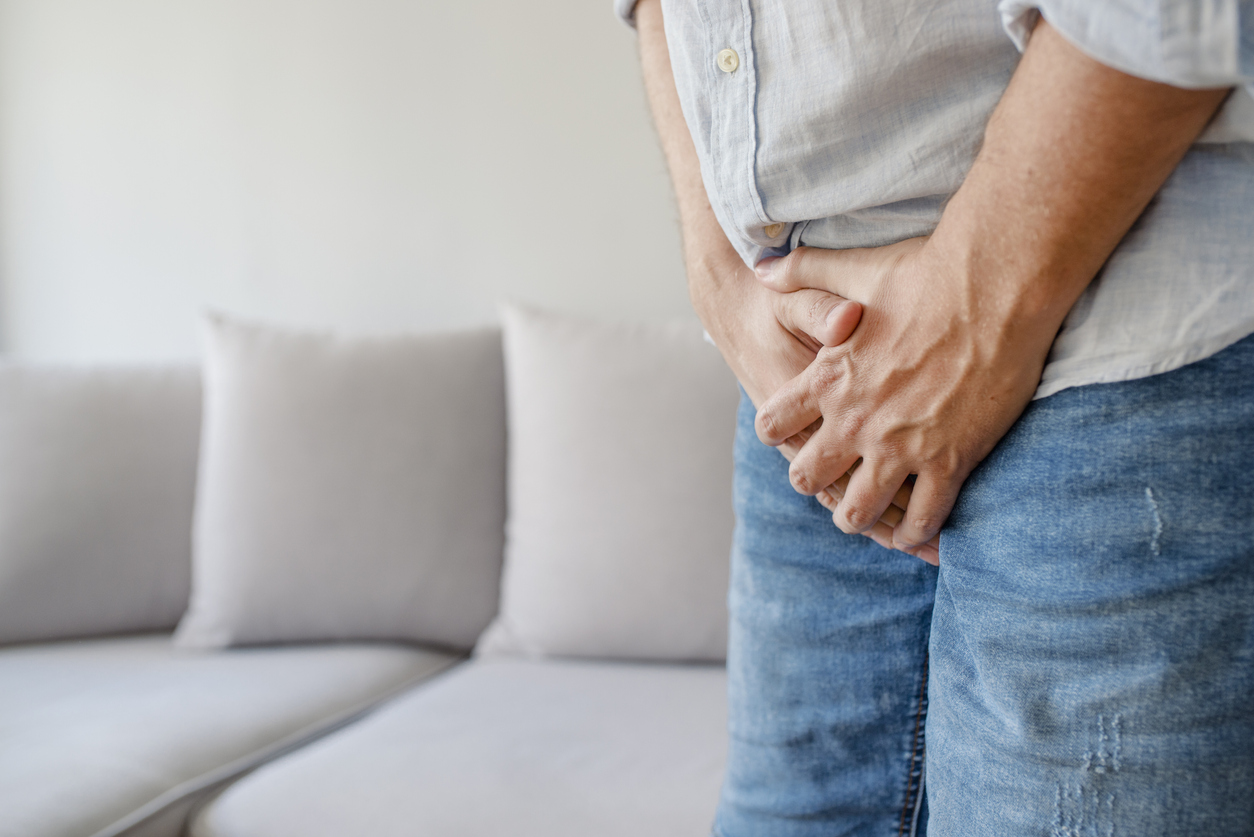Case Study: LUTS following TURP
Anthony was referred to WMHP with incontinence and painful voiding 3 months after a transurethral resection of the prostate (TURP). This case study explores the complex and diverse aetiology of lower urinary tract symptoms (LUTS) and highlights the contribution of increased tension in pelvic floor muscles.
Subjective Assessment
- History:
- Anthony, a 54-year-old male, was referred to WMHP by his urologist for urinary incontinence and painful voiding following a TURP 3 months prior.
- He reported stress urinary incontinence with lifting, bending, coughing etc. (and was avoiding any lifting / exercise due to fear of leakage), and daily urge urinary incontinence with coming home / key in the door.
- He was wearing 1 moderate sized pad per day for containment.
- Anthony was also bothered by painful voiding, with pain at initiation and termination of void, hesitancy and post-micturition dribble.
- Pre-operative LUTS: voiding dysfunction++, increased urgency but no incontinence, nocturia x 4-5.
- Bowel function: very constipated initially after TURP, managed with Movicol, bowels now moving daily with Metamucil but needs to strain.
- Erectile function: retrograde ejaculation since TURP, no pain / erectile dysfunction.
- Social history: married with children, works in a call centre, very anxious that urinary symptoms will never go away, and he will be ‘stuck like this forever’. Anthony also disclosed that he had long standing hesitancy in public toilets since an episode of sexual abuse when he was 15 (disclosed at 2nd appointment).
- Exercise: sedentary lifestyle. Previously morbidly obese, had lost weight with lap band 10 years ago but had put some back on and was still overweight – especially around the abdomen.
- Anthony’s goals:
- To be able to go through daily life without feeling insecure about bladder control.
- To be able to get back to exercising at the gym, playing with kids, and lifting things around the house without leaking.
Objective Assessment
- Digital rectal examination: overactivity and tenderness of the pelvic floor muscles, poor ability to contract and relax, palpation of anterior pelvic floor reproduced urethral and penile pain.
- Bladder diary: diurnal urinary frequency 5-7, nocturia 1, voided volume daytime 75-350mls, nocturnal 475-650mls. Type 4 urgency with volumes 250-650mls. Fluid intake: 1.6-2.2L, comprising only of diet soft drinks and 2 strong coffees.
- Bladder scan: post void residual within normal limits.
- Dipstick urinalysis: NAD.
Impression:
Anthony’s lower urinary tract symptoms are likely being caused by pre-existing overactive bladder due to long term obstruction from an enlarged prostate, and pelvic floor muscle dysfunction. His pelvic floor muscles have increased resting tension and poor relaxation, and this is probably longstanding, evidenced by his history of hesitancy in public toilets.
His symptoms are likely contributed to by anxiety surrounding his bladder dysfunction, fear avoidance behaviours, obesity, fluid intake being predominately irritants (caffeine and artificial sweetener), constipation, and history of childhood sexual abuse.
Treatment program:
- Education: Anthony was educated extensively about the cause of his symptoms, contributing factors, and positive prognosis for rehabilitation, including the positive impact that weight loss could have on his symptoms.
- Pelvic floor muscle downtraining program, then functional strengthening: real time transperineal ultrasound was used in-rooms for visual biofeedback to help Anthony learn how to relax his pelvic floor muscles. Once he had mastered this skill, his pelvic floor muscle training program was focussed on functional strengthening prior to movements that resulted in leakage.
- Voiding re-education: Anthony was instructed in relaxed voiding techniques.
- Behavioural bladder retraining: urge suppression and deferral strategies were discussed to control urinary urgency / incontinence.
- Fluid modification: Anthony was advised to minimise caffeine and bladder irritants and aim for 1.5-2L total fluid intake.
- Treat constipation: Anthony was educated about dietary changes for stool softening and how to empty his bowels without straining.
Outcome
Anthony was seen on 5 occasions over a 6-month period. After 2 months of treatment, he reported no longer experiencing urgency urinary incontinence, a reduction in stress urinary incontinence, and a reduction in pain with voiding. He was starting to feel more confident to try some heavier activities around the house eg. gardening and lifting his dog into the car.
After 6 months of treatment, Anthony reported a full resolution of symptoms. He was confidently able to kick the footy with his kids, had returned to the gym, and was motivated to get back to a healthy lifestyle and continue to lose the weight he had set out to lose 10 years ago.
March 2019





